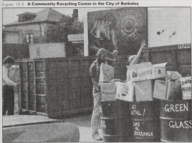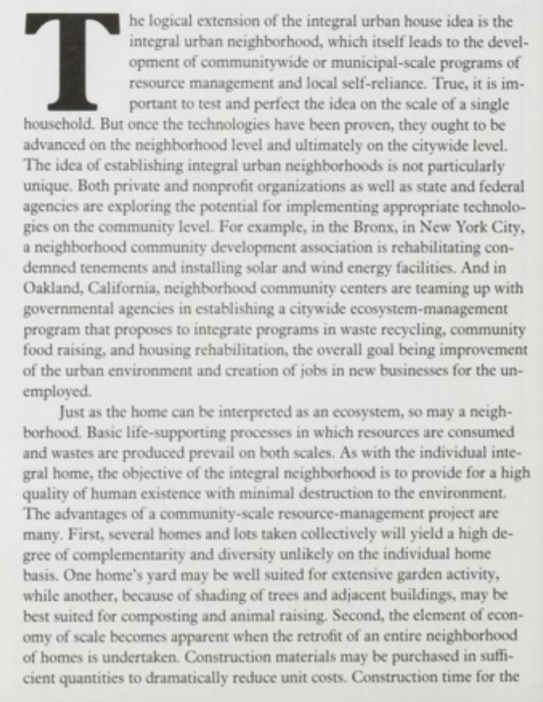The last chapter of the Sierra Club Books’ The Integral Urban House: Self-Reliant Living in the City poses future ambitions for the House. It shows the “logical extension of the integral urban house idea” to grow into the neighborhood itself. The original builders knew this was not a static project, but an ever-growing movement.
The chapter outlines community gardens and waste management systems as means to “integrate” the neighborhood. Both provide the opportunity to grow communities and increase resource efficiency, though many questions also arise on how to actually delegate and manage these systems.
Previous chapters discussed the possibility of wind power or a methane digester, but this was limited due to the small size and energy usage of the individual House. Another example is a community recycling or composting site, as seen below. Started by former members of commune Ecology Action, the Berkeley recycling center showed the potential for collective action towards waste management programs that benefit everyone. These technologies and programs would have greater benefit at larger scales. Thus, if the entire neighborhood were integrated, they would be much more valuable.

Similarly, the chapter touches on community initiatives like the Oregon Bottle Bill, one of the first legislative pieces to encourage reuse of glass, plastic, and other containers. It mandated that the refund value be printed on all containers, and established more recycling centers that could receive reusable containers. It highlights the need to draw from other contexts to build a more resilient movement.
While the Integral Urban Neighborhood was never achieved, it represents a desire for the project to grow bigger than the confines of the singular House. Many urban redevelopment projects today see the benefit of planning entire communities or neighborhoods for sustainability, so these ideas continue to live on.
